How to choose the right crowdfunding platform: the 6 best crowdfunding platforms in 2023.
Glenys Alvarez
September 21, 2023
Recent Posts
Categories

Choosing the platform for your crowdfunding campaign is as important as choosing the main objective of your campaign. The chosen platform should align with your goals, the nature of your project and your available resources and compliances.
Additionally, each crowdfunding platform targets a specific public and has its fees and rules. Therefore knowing the core features, target audience, and pros and cons of the platforms is crucial before making a decision on which one to use for your campaign.
In this blog post, we selected the 6 best platforms for crowdfunding in 2023 and will break down how they work, what are their features, fees, advantages and disadvantages, and why you should consider using each of them. Whether you are financing an art project, starting a business, funding a nonprofit organization, or asking for funds to pay a medical bill, there is a crowdfunding platform for you.
Content
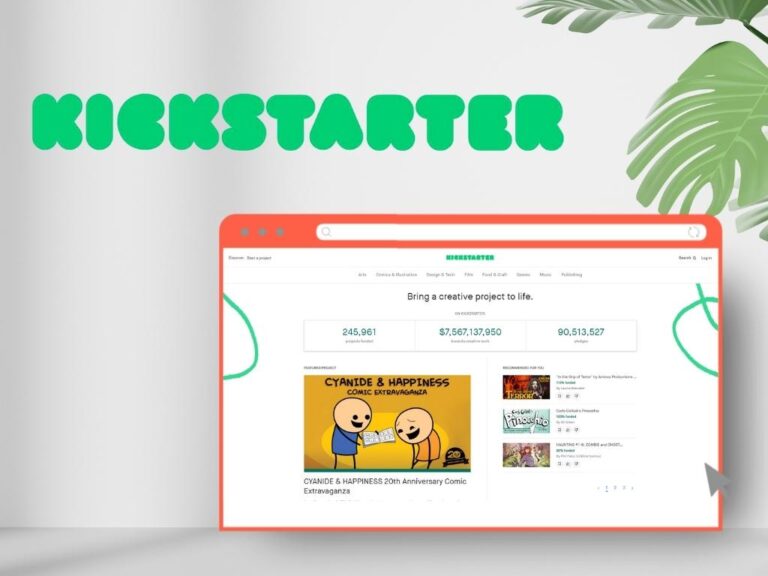
Kickstarter: best for structured projects
Fees:
A flat fee of 5%, plus payment transaction fees between 3% and 5%. Both are assessed only if you meet your goal.
Kickstarter is a crowdfunding platform mainly focused on startups and creative projects, such as films, games, music, art, design, and technology. It is based on a reward system, where you can offer different levels of rewards to your backers, as an incentive for their contribution.
Another key point is that it is an all-or-nothing funding platform. This means that you will only get the raised money if you reach or exceed your goal by the end of a chosen deadline but if you don’t, all the pledges are canceled and no money changes hands.
Pros
- Huge marketplace: a large and active community of people who are interested in supporting creative projects.
- Familiarity: Kickstarter is a well-known and trusted name in the crowdfunding industry.
- Exclusive service providers: Many service providers specialize in helping Kickstarter campaigns with various aspects, such as marketing, fulfillment, design, video production, and more.
Cons
- More competition: since Kickstarter is so popular and crowded, it can be hard to stand out from the thousands of other campaigns that are running at the same time. As a result, you will have to work hard to market your project and attract attention from backers.
- No flexible funding: because Kickstarter uses an all-or-nothing funding model, you risk getting nothing if you don’t reach your goal.
- Rules: Because Kickstarter has its own rules and guidelines for what types of projects are allowed and what types of rewards are acceptable, you may have to adjust or limit your project or reward ideas to comply with them.
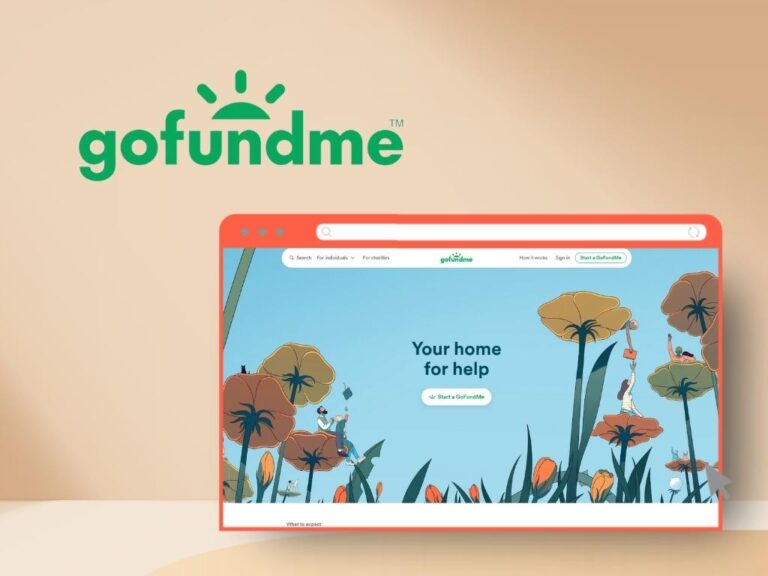
GoFundMe: best for individuals
Fees:
A transaction fee of 2.9% + $0.30 per donation, charged to the donor.
GoFundMe lets you create a fundraising campaign for almost any purpose. It is mainly focused on need-based and charitable projects, such as medical, emergency, memorial and education.
For this reason, the success of your campaign depends on how well you tell your story, how effectively you reach your audience, and how generous your donors are.
Pros
- No platform fee: The main advantage of GoFundMe is that it doesn’t charge a platform fee to the beneficiary, which means that you get to keep more of the money you raise. However, there is still a transaction fee per donation that goes to the payment processor.
- Large Community: It has a large and supportive community of donors who are willing to help people in need.
- Flexible funding: can collect funds without meeting your funding goal.
Cons
- Competition: It can be difficult to stand out from the crowd and attract donors if your campaign is not very compelling or unique.
- Poor customer support: It has poor customer support that can be hard to reach and unresponsive.
- Funds withdrawal: you must give your SSN to verify your identity and withdraw funds. Additionally, some campaigners have reported trouble withdrawing funds.
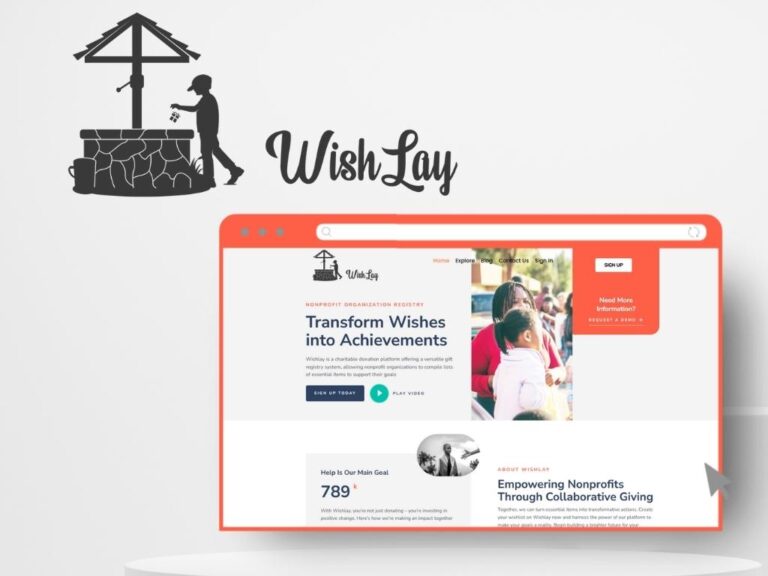
Wishlay: best for nonprofit organizations (product-focused)
Fees:
No fees from the platform to the beneficiary Nonprofit organization. A service fee of 5% on each transaction deducted from the donor’s payment.
Wishlay is a unique crowdfunding platform designed exclusively for nonprofit organizations. It allows your nonprofit organization to create wishlists of essential products and items from an extensive e-commerce store, and share them with your supporters and donors.
Additionally, Wishlay helps donors to find and support the causes they care about. This, by browsing through the wishlists of various nonprofit organizations and purchasing or contributing to the purchase of the items they need, whether in a one-time contribution or as a regular monthly contribution to that particular product or cause.
Pros
- Low Competition: It may be easier to stand out from the crowd and attract donors.
- Tailored donations: It allows nonprofit organizations to get exactly what they need for their cause, without wasting money or resources on unwanted or unnecessary items.
- Hassle-free and low-cost shipping: It reduces the hassle and cost of shipping and handling for both parties, as the items are delivered directly by Wishlay’s e-commerce partner.
- Trustworthy and transparent transactions: It increases the trust and transparency between nonprofit organizations and donors, as they can see exactly what items are purchased and delivered.
Cons
- Limited donor flexibility: It may limit the choice and flexibility of donors, as they can only purchase the items that are listed on the wishlists.
- Not for emergencies: It may not be suitable for urgent or emergency needs, as it may take some time for the items to be delivered.
- Geographic compatibility issues: It may not be compatible with some countries or regions, as it depends on the availability and accessibility of Wishlay’s e-commerce partner.
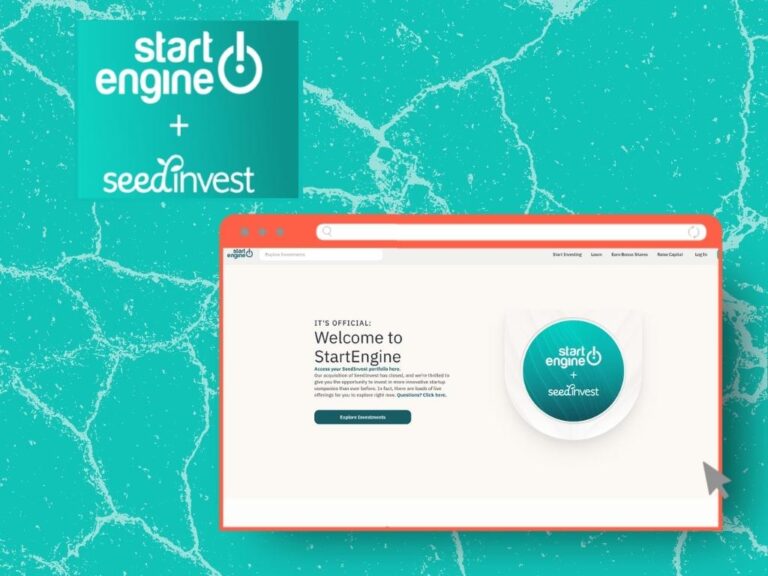
StartEngine + SeedInvest: best for startups
Fees:
A Service Fee of 7% of the amount raised. Equity Fee: 2% of the amount raised by the company. A transaction Fee of 3.5% of the amount invested by the investor, depending on the company, and a Sell Transaction Fee of 5% of the amount sold by the investor, if using the StartEngine Secondary alternative trading system.
StartEngine is an equity-based crowdfunding, which means that you offer shares of your company to your backers in exchange for their investment. In May 2023, StartEngine announced that it had acquired SeedInvest, another equity crowdfunding platform, since then both platforms merged and are now known as StartEngine.
It specializes in two regulations under the JOBS Act: Regulation Crowdfunding (Reg CF) and Regulation A+. The distinction between the two regulations is related to how much money you can raise, how much money each person can invest in your project and the documents and filing requirements you need to comply with.
Pros
- Market: You can trade your shares on StartEngine Secondary, a regulated marketplace that allows you to buy and sell shares of companies that have raised on StartEngine.
- Control over your campaign: You can set your own terms and valuation for your company and retain control over your vision and strategy.
- Community: large and engaged community of investors who can also become your customers, fans and advocates.
Cons
- High fees: There are fees involved in both investing and raising funds on StartEngine, which may reduce your returns or increase your costs.
- No flexible funding: it also uses an all-or-nothing funding model, so the invested capital will return to your backer if you don’t reach your goal.
- High competition: you may face competition from other platforms or sources of capital.
- Strict rules: To launch a campaign on StartEngine, you need to apply online, craft your story, set your own terms, prepare your legal documents and submit them for review. Only when approved, you can go live and start accepting investments from the public.
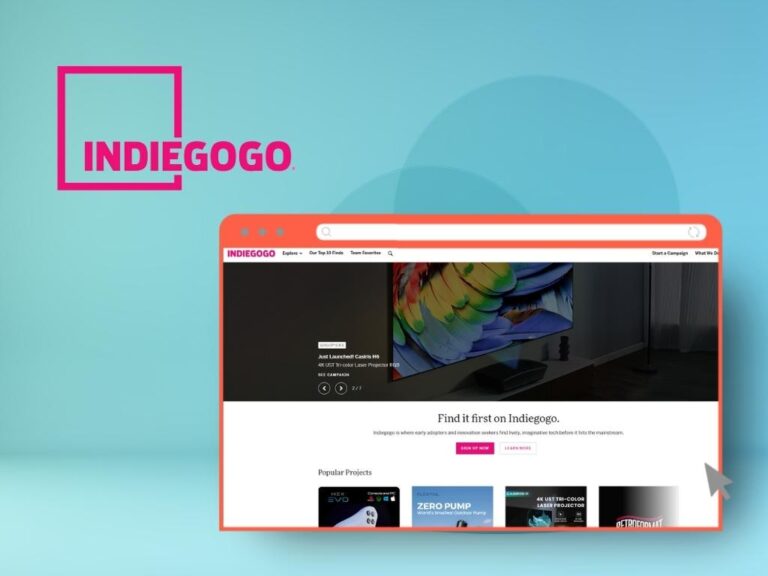
Indiegogo: best for small community businesses
Fees:
For fixed funding, a 5% platform fee and a 3% + $0.30 payment processing fee per contribution. For flexible funding, a 5% platform fee if you reach your goal and a 9% platform fee if you don’t, plus the same payment processing fee.
Indiegogo offers you two options for your campaign: fixed or flexible funding. Fixed funding means that you only get the money if you reach or exceed your goal within a chosen time. Flexible funding means that you get to keep the money regardless of whether you reach your goal or not. It also lets you create a fundraising campaign for almost any purpose, from creative endeavors to social causes.
Due to this flexibility, this crowdfunding platform is a good fit for businesses or individuals who are still building their community of donors and don’t have much reach yet. Since this is a less popular platform the competition is also less, allowing the opportunity for your campaign to stand out higher and since you can withdraw your funds even if the goal is not met, you will still get funds even if you don’t get enough donations.
Pros
- Guaranteed donation security: Funding guarantee that protects the donation and ensures that the campaign owner receives the money.
- Instant fund withdrawal: Allows you to withdraw funds immediately without waiting for your campaign to end or reach its goal.
- Flexible fund choice: It lets you take control of your campaign funds and decide whether you need a fixed or flexible funding.
Cons
- Personal information demanded: It requires you to provide your Social Security Number or Employer Identification Number to verify your identity and withdraw funds.
- Unreliable customer service: Poor customer support that can be hard to reach.
- Potential reward liability: It can place you in a compromised position if you don’t reach your goal but still have to deliver the perks and rewards to your backers.
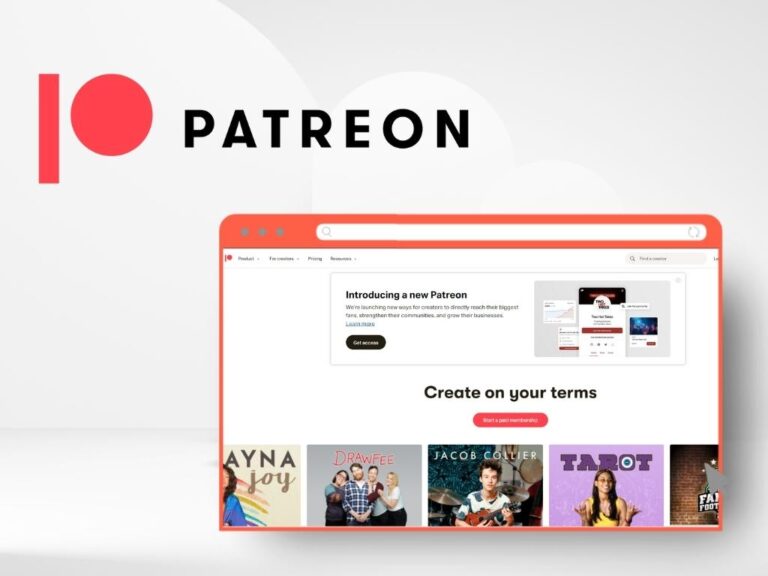
Patreon: best for creators
Fees:
A platform fee and a payment processing fee. The platform fee depends on the plan you choose from 5% to 12% of your monthly income. The payment processing fee varies depending on the amount and currency of each payment, ranging from 2.9% + $0.30 to 5% + $0.10 per transaction.
Patreon lets you create a membership program for your fans, who support you with monthly or per-creation payments. This crowdfunding platform allows you to set up different tiers of membership, each with its own rewards and benefits for your patrons, offering exclusive content, community access, merch, and more.
Pros
- Fan-driven relationship: It allows you to build a direct and lasting relationship with your fans, who value your work and want to support you.
- Predictable income: It gives you a steady and predictable income stream, which helps you focus on your creative work and achieve your goals.
- Wide and diverse projects: It supports a wide range of creative fields and genres, from music to podcasts to comics to games.
Cons
- Expensive fees: High platform and processing fees
- Personal information demanded: It requires you to provide your Social Security Number or Employer Identification Number to verify your identity and withdraw funds.
- Unreliable customer service: It has poor customer service.
- Difficult patron acquisition: It can be challenging to attract and retain patrons, especially if your content is niche-based or not easily accessible.

Choosing the Crowdfunding Platform that better suits your project
The mentioned crowdfunding platforms constitute a great option, if you are focusing on startups, nonprofit organizations, individuals and businesses who want to raise money online for their projects. Each of these platforms has unique features, fees, and advantages that can make it, or not, the right fit for your project. However, they also drawbacks and limitations that you should consider before launching your campaign.
Our recommendation is to analyze each one carefully, compare their pros and cons with your crowdfunding needs and project stage and finally make your decision. And don’t forget that choosing the right platform is important but it still takes a good pitch of your idea to the right people and a good marketing strategy for your fundraising campaign to succeed.
If you’re a Nonprofit Organization looking to maximize your crowdfunding results with limited resources check out Get better results from your Crowdfunding Campaign: A Guide for Non-Profit Organizations.

